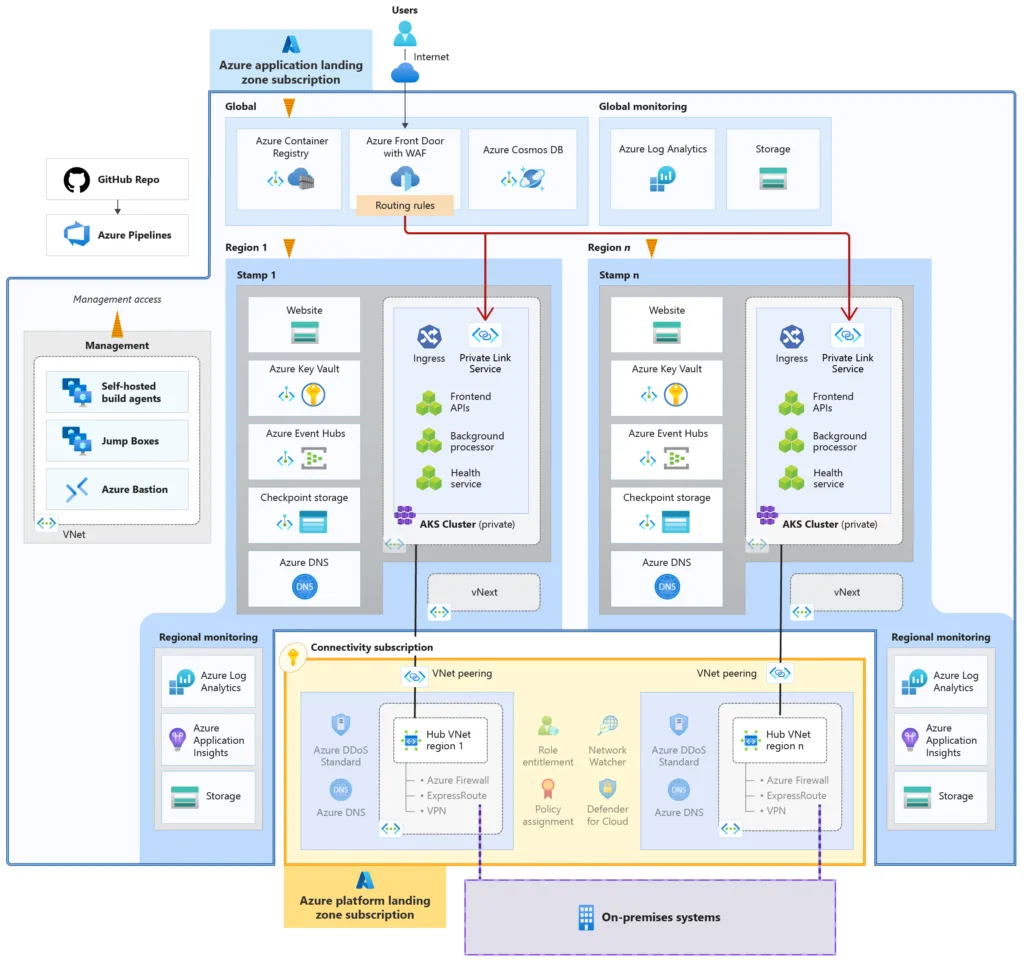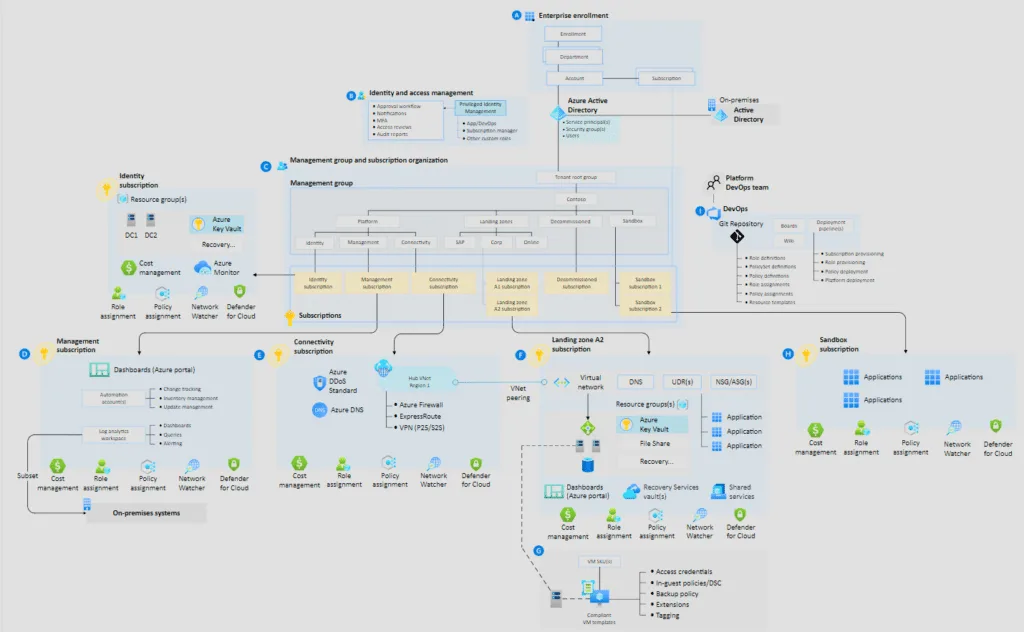The Landing Zone for the Microsoft Cloud environment is a reference architecture that supports companies in the secure and scalable provisioning of Azure resources.
What are the 5 focus topics when designing the Azure Landing Zone?
Security
The Landing Zone provides a secure environment in which sensitive data and applications are protected. This includes security measures such as multi-factor authentication, network security and access controls.
Scalability
The zone is designed to adapt easily and quickly to changing business requirements. We achieve this, for example, through the use of automated scripts and templates.
Governance
Effective governance is important in order to manage the landing zone effectively and optimize operations. This includes, for example, defining roles and responsibilities, implementing policies and monitoring the use of resources.
Cost efficiency
A landing zone should be designed in such a way that the costs of operating Azure resources are minimized. This includes, for example, optimizing resource utilization and using Azure cost management tools.
Automation
The automation of processes is important in order to improve the efficiency and scalability of the landing zone. This includes, for example, the automation of deployments and updates as well as configuration and change management.
Conclusion
Always plan your environment to be scalable. Build your “Architectural Runway” within sight, e.g. for your 1000 employee company. It does not need multiple landing zone subscriptions, and don’t make it too complicated, especially at the beginning.
Here is the Microsoft for an Mission Critical reference architecture:

Source: Mission-critical baseline architecture in an Azure landing zone
The landing zone should be in a separate subscription in which the shared resources are created.
Microsoft documents often recommend the use of multiple subscriptions, but this only makes sense in larger environments.
If you want to familiarize yourself with this topic and design such a solution as an architect, whether network, security or infrastructure, you should take a look at the Microsoft reference documents on the Cloud Adoption Framework.

Source: Azure landing zone architecture
You can find more reference architectures on the Microsoft Azure Architecture Center website here and you can find out how to implement the right naming conventions right from the start here.
If you already started your journey and you want to review what was already build, I highly recommend the tool Azure Quick Review.






